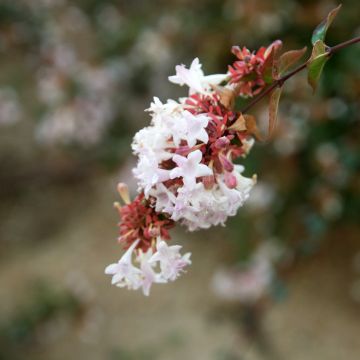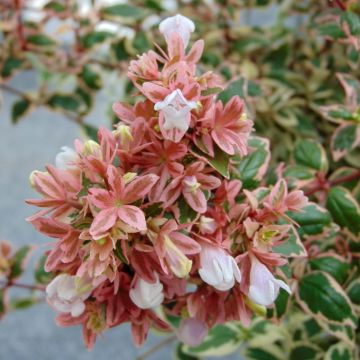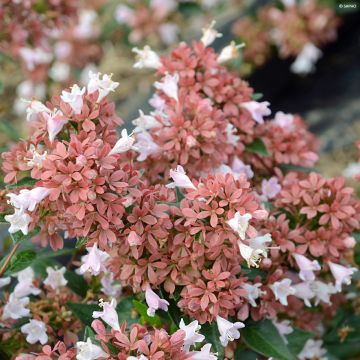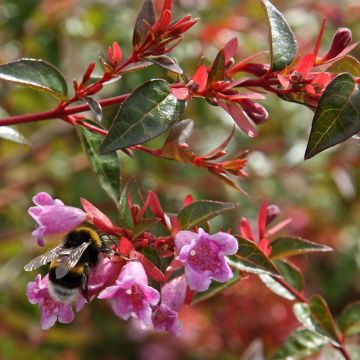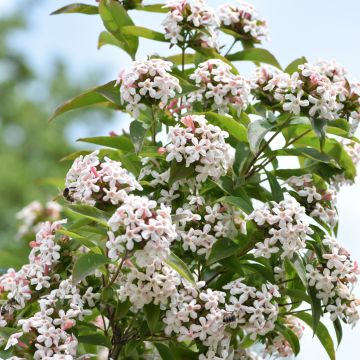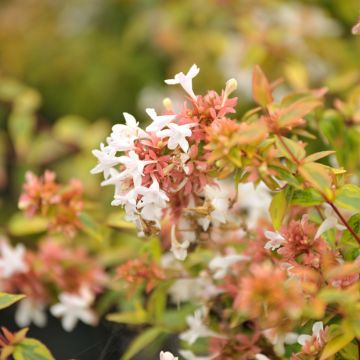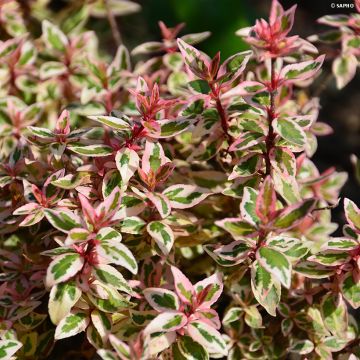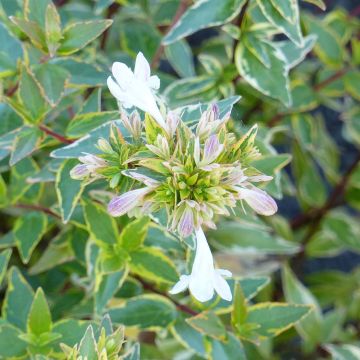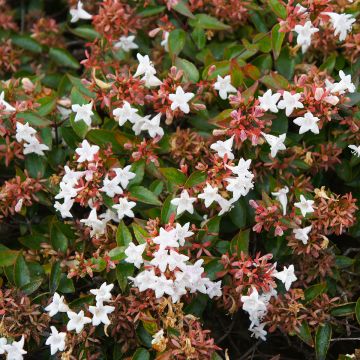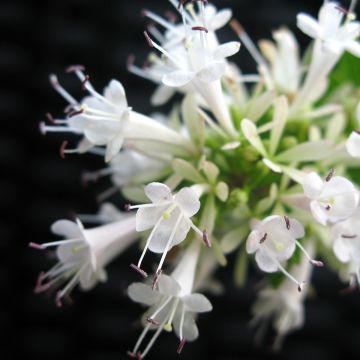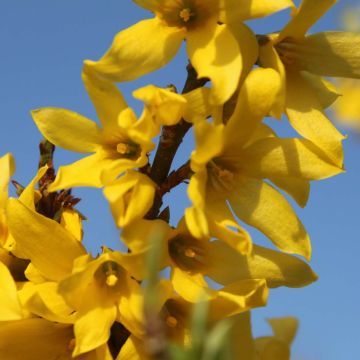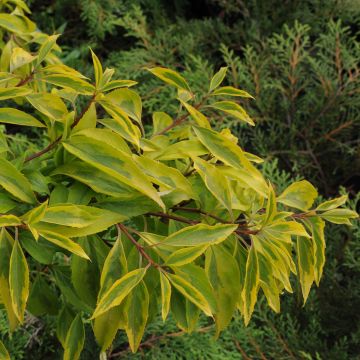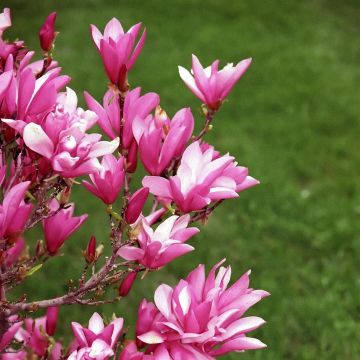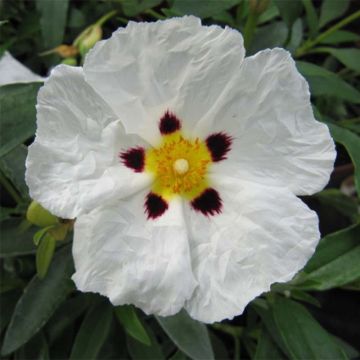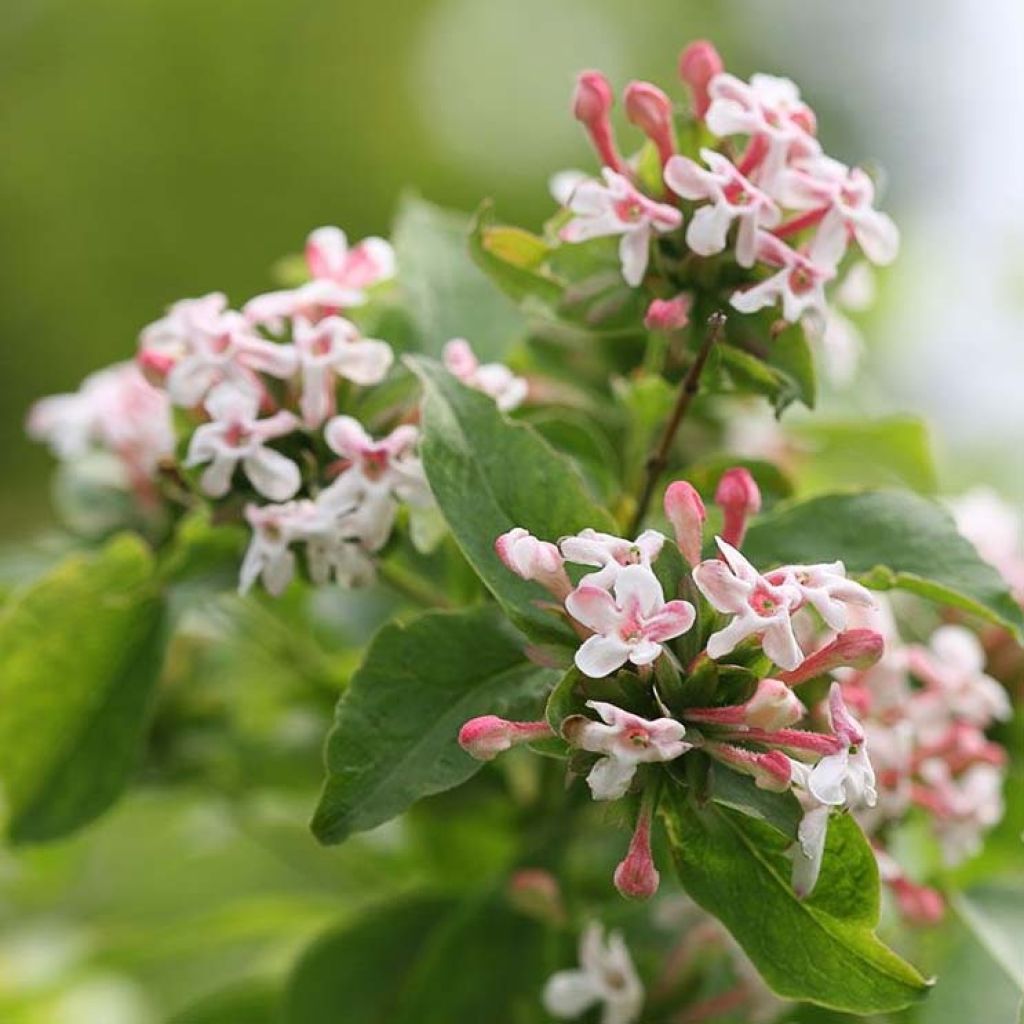

Abelia mosanensis Sweet Emotion
Abelia mosanensis Sweet Emotion
Abelia mosanensis Sweet Emotion
Fragrant Abelia
I received the young plant very quickly and in good condition, and it was full of flowers with a delightful fragrance. For specific research area advice, I will need more time.
Hugo, 12/05/2022
Special offer!
Receive a €20 voucher for any order over €90 (excluding delivery costs, credit notes, and plastic-free options)!
1- Add your favorite plants to your cart.
2- Once you have reached €90, confirm your order (you can even choose the delivery date!).
3- As soon as your order is shipped, you will receive an email containing your voucher code, valid for 3 months (90 days).
Your voucher is unique and can only be used once, for any order with a minimum value of €20, excluding delivery costs.
Can be combined with other current offers, non-divisible and non-refundable.
Why not try an alternative variety in stock?
View all →This plant carries a 24 months recovery warranty
More information
We guarantee the quality of our plants for a full growing cycle, and will replace at our expense any plant that fails to recover under normal climatic and planting conditions.

Would this plant suit my garden?
Set up your Plantfit profile →
Description
The Abelia mosanensis 'Sweet Emotion' is a new American variety, exceptional for the enchanting scent of jasmine from its spring flowers, and for its remarkable hardiness. It is an improvement of the species A. mosanensis, native to Korea, with early flowering and a more pronounced scent than other Abelia species. Still little known and cultivated, this deciduous shrub is nevertheless one of the most cold-resistant in the Abelia genus. From the end of May, it offers a multitude of pink buds that open into tubular white flowers, sometimes speckled with pink. They have beautiful shiny green foliage that takes on beautiful red-orange autumn colours. This Abelia deserves a small place in the garden, in a flowering hedge or in a grove.
Like all Abelia, and also honeysuckles and Kolkwitzia amabilis, Abelia mosanensis 'Sweet Emotion' belongs to the caprifoliaceae family. The habit of this shrub is both bushy and spreading, flexible and dense. Its growth is quite fast, depending on the growing conditions. At maturity, this Abelia will reach an average height of 1.70m with the same spread. It forms its flower buds in autumn and blooms in spring. Flowering occurs between April and June depending on the climate, on one-year-old and older branches. The deep pinkish-red buds open into small tubular flowers, randomly speckled with white and pink, 2cm (0.8in) long, grouped in panicles at the axils of the leaves. The flowers release a powerful scent of jasmine, with sweet and spicy notes, which attracts many pollinating insects. The branches of the fragrant Abelia bear small, shiny, medium green leaves, opposite in pairs, entire and ovate in shape. They take on pretty red-orange hues in autumn and persist until early winter, as long as the frosts are not too severe. Note that this Korean Abelia prefers soils that remain moist, humus-rich, slightly acidic to neutral.
'Sweet Emotion' Abelia is a remarkably flowering and fragrant shrub that deserves to be discovered. Its hardiness is excellent in well-drained soil, its growth is moderate, and it has a unique personality that will leave a mark on the garden. Its regular yet flexible habit allows it to be planted in a flowering hedge alongside buddleias, kolwitzia, mock oranges, Syringa microphylla 'Superba' and other ceanothus, or in the middle of autumn flower beds, paired with asters, Japanese anemones, tricyrtis, etc. It will work wonders in an ericaceous border with rhododendrons and Pieris. 'Sweet Emotion' also thrives in a large pot, which can be placed on the terrace to fill the spring evenings with fragrance.
Report an error about the product description
Abelia mosanensis Sweet Emotion in pictures
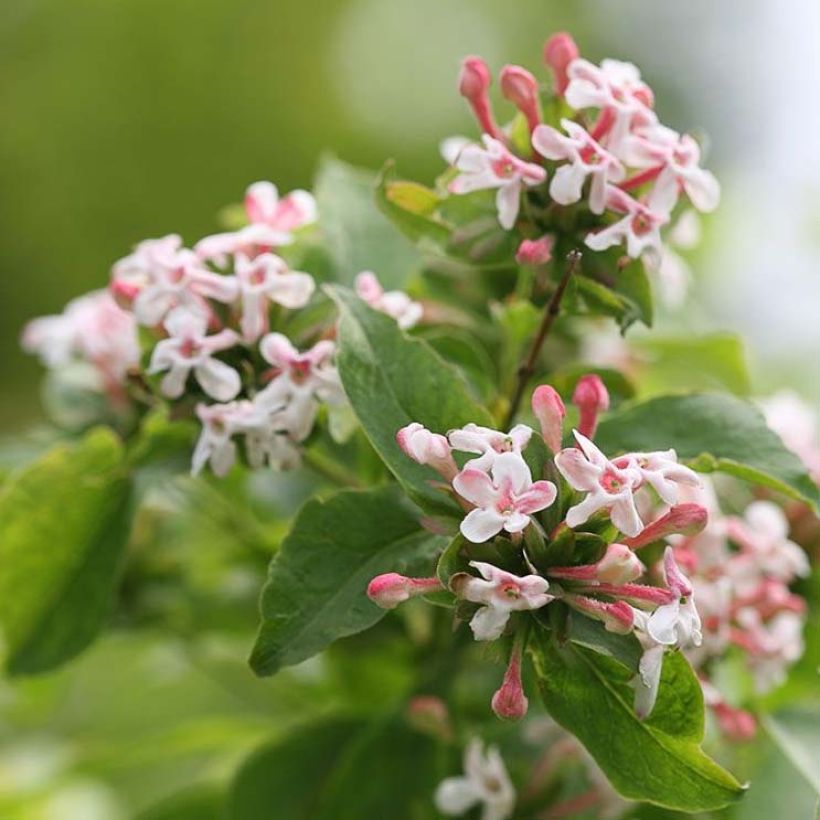

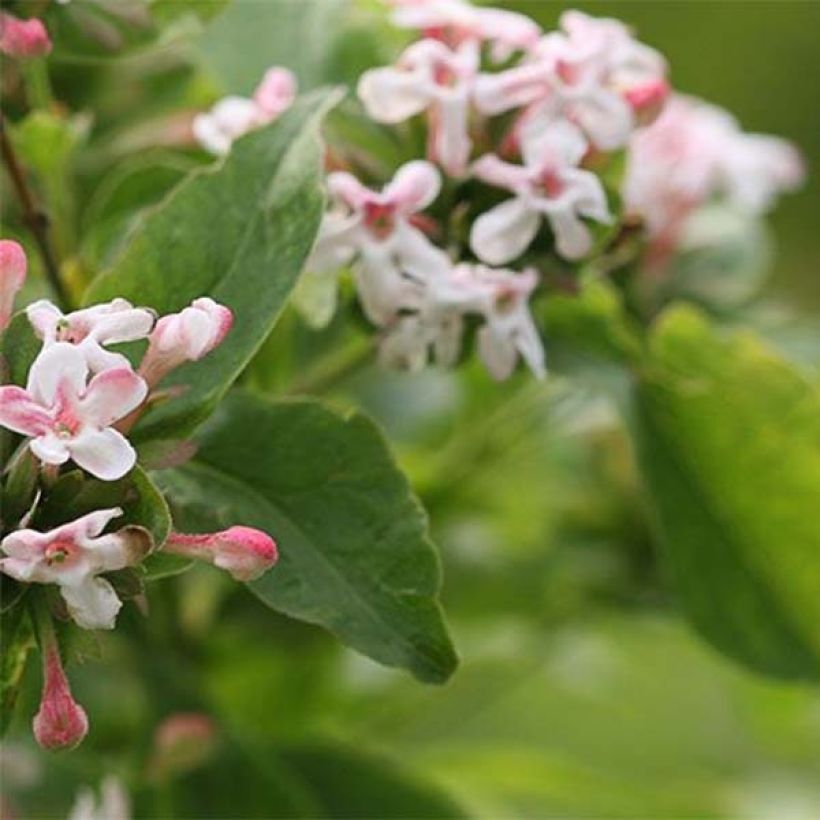

Plant habit
Flowering
Foliage
Botanical data
Abelia
mosanensis
Sweet Emotion
Caprifoliaceae
Fragrant Abelia
Zabelia tyaihyoni
Cultivar or hybrid
Other Abelia
View all →Planting and care
Abelia mosanensis 'Sweet Emotion' has very good resistance to cold, down to -25°C (-13°F) in well-drained soil, and grows in any good garden soil that is deep enough, preferably slightly acidic to neutral. While it prefers soils that retain moisture, it also tolerates soils which are periodically dry in summer, when it has been planted in the garden for at least 3 years. To support flowering, water judiciously but abundantly, every 15 days. It thrives in full sun but also tolerates partial shade very well. Once mature, it should be pruned sparingly, just after flowering, as the flowers bloom on old wood. Young plants often need to be densified so regularly pinch the tips of young shoots during the growth period.
Planting period
Intended location
Care
-
, onOrder confirmed
Reply from on Promesse de fleurs
Similar products
Haven't found what you were looking for?
Hardiness is the lowest winter temperature a plant can endure without suffering serious damage or even dying. However, hardiness is affected by location (a sheltered area, such as a patio), protection (winter cover) and soil type (hardiness is improved by well-drained soil).

Photo Sharing Terms & Conditions
In order to encourage gardeners to interact and share their experiences, Promesse de fleurs offers various media enabling content to be uploaded onto its Site - in particular via the ‘Photo sharing’ module.
The User agrees to refrain from:
- Posting any content that is illegal, prejudicial, insulting, racist, inciteful to hatred, revisionist, contrary to public decency, that infringes on privacy or on the privacy rights of third parties, in particular the publicity rights of persons and goods, intellectual property rights, or the right to privacy.
- Submitting content on behalf of a third party;
- Impersonate the identity of a third party and/or publish any personal information about a third party;
In general, the User undertakes to refrain from any unethical behaviour.
All Content (in particular text, comments, files, images, photos, videos, creative works, etc.), which may be subject to property or intellectual property rights, image or other private rights, shall remain the property of the User, subject to the limited rights granted by the terms of the licence granted by Promesse de fleurs as stated below. Users are at liberty to publish or not to publish such Content on the Site, notably via the ‘Photo Sharing’ facility, and accept that this Content shall be made public and freely accessible, notably on the Internet.
Users further acknowledge, undertake to have ,and guarantee that they hold all necessary rights and permissions to publish such material on the Site, in particular with regard to the legislation in force pertaining to any privacy, property, intellectual property, image, or contractual rights, or rights of any other nature. By publishing such Content on the Site, Users acknowledge accepting full liability as publishers of the Content within the meaning of the law, and grant Promesse de fleurs, free of charge, an inclusive, worldwide licence for the said Content for the entire duration of its publication, including all reproduction, representation, up/downloading, displaying, performing, transmission, and storage rights.
Users also grant permission for their name to be linked to the Content and accept that this link may not always be made available.
By engaging in posting material, Users consent to their Content becoming automatically accessible on the Internet, in particular on other sites and/or blogs and/or web pages of the Promesse de fleurs site, including in particular social pages and the Promesse de fleurs catalogue.
Users may secure the removal of entrusted content free of charge by issuing a simple request via our contact form.
The flowering period indicated on our website applies to countries and regions located in USDA zone 8 (France, the United Kingdom, Ireland, the Netherlands, etc.)
It will vary according to where you live:
- In zones 9 to 10 (Italy, Spain, Greece, etc.), flowering will occur about 2 to 4 weeks earlier.
- In zones 6 to 7 (Germany, Poland, Slovenia, and lower mountainous regions), flowering will be delayed by 2 to 3 weeks.
- In zone 5 (Central Europe, Scandinavia), blooming will be delayed by 3 to 5 weeks.
In temperate climates, pruning of spring-flowering shrubs (forsythia, spireas, etc.) should be done just after flowering.
Pruning of summer-flowering shrubs (Indian Lilac, Perovskia, etc.) can be done in winter or spring.
In cold regions as well as with frost-sensitive plants, avoid pruning too early when severe frosts may still occur.
The planting period indicated on our website applies to countries and regions located in USDA zone 8 (France, United Kingdom, Ireland, Netherlands).
It will vary according to where you live:
- In Mediterranean zones (Marseille, Madrid, Milan, etc.), autumn and winter are the best planting periods.
- In continental zones (Strasbourg, Munich, Vienna, etc.), delay planting by 2 to 3 weeks in spring and bring it forward by 2 to 4 weeks in autumn.
- In mountainous regions (the Alps, Pyrenees, Carpathians, etc.), it is best to plant in late spring (May-June) or late summer (August-September).
The harvesting period indicated on our website applies to countries and regions in USDA zone 8 (France, England, Ireland, the Netherlands).
In colder areas (Scandinavia, Poland, Austria...) fruit and vegetable harvests are likely to be delayed by 3-4 weeks.
In warmer areas (Italy, Spain, Greece, etc.), harvesting will probably take place earlier, depending on weather conditions.
The sowing periods indicated on our website apply to countries and regions within USDA Zone 8 (France, UK, Ireland, Netherlands).
In colder areas (Scandinavia, Poland, Austria...), delay any outdoor sowing by 3-4 weeks, or sow under glass.
In warmer climes (Italy, Spain, Greece, etc.), bring outdoor sowing forward by a few weeks.






























